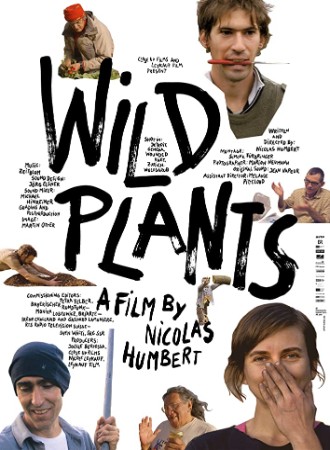
Wild Plants 2016
Distributed by Grasshopper Films, 12 East 32nd St., 4th Floor, New York, NY 10016
Produced by Joëlle Bertossa, Close Up Films and Nicole Leykauf, Leykauf Film
Directed by Nicolas Humbert
DVD , color, 108 min. In English, French, and German with English subtitles where needed
Cooperative agriculture, Wildlife conservation
Date Entered: 08/15/2017
Reviewed by Bonnie Jo Dopp, Librarian Emerita, University of MarylandThis long, slow, quiet art documentary begins with 11 minutes of wintry scenes and human portraits before its opening lines are heard: musings between two young men about life cycle processes (nothing dies, all life simply transforms) as they fork compost into a Detroit community garden.
Filmed primarily in the US (Detroit, and South Dakota’s Pine Ridge Indian Reservation) and Switzerland (Zurich, Geneva), the film spans a year of gardening (spring planting, summer weeding, fall harvest, winter composting and resting) but also reveals day-night cycles of natural life and activity.
A German Swiss “guerrilla gardener” plants carefully sorted seeds (“Over the years, one learns their language”) along road edges and medians in Zurich at night. He feels what he does to add wildness to the city is “almost devotional.” Rain or shine, a large community garden in Geneva is tended by young people guided by a master gardener who thinks society should slow down and feels that gardening is the best way to do this, using few machines and much hand labor. Several workers cite social benefits from community gardening including knowing your customers, cooperating with others, resisting anonymity. Gardens in Detroit renew urban spirits: a cemetery allows people to collect logs for firewood when trees are culled; an old pear tree in an abandoned yard still yields delicious fruit. Personal benefits cited include “keeping your mind busy” while harvesting, letting firewood warm you three times (splitting, stacking, burning), and liberating yourself from fear of death when you consider the cyclical nature of compost.
Thunderstorms, nocturnal insect sounds, urban noises from planes, trains, and emergency vehicles are all part of the well-constructed soundscape, which includes mostly restful music and long periods of silence as well. A family dog on ice, domestic cats in gardens, and human hands holding a chick, a frog, and earthworms keep the focus on human-nature exchanges.
Institutional use of this lovely philosophical program might best be in a stress-reducing quiet zone. It could be sleep-inducing if viewed after lunch.